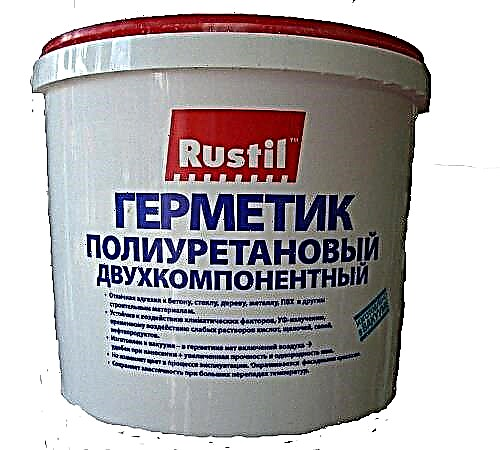The mixer is known to almost any housewife, since the first simple models of this device were common in Soviet times.
The blender is an improved version of the mixer, and it appeared on the market relatively recently.
The names of these devices are taken from English words, the meanings of which are almost identical: “mix” and “make a mixture”.
In fact, the mixer and the blender are completely different devices that differ in different functionality and are used in different situations.
What is a blender for?
The working elements of the blender are rotating sharp steel blades. Thanks to this design, the blender easily grinds fruits and vegetables, it can be used for chopping ice, nuts or crackers.
The grinding ability depends on the power of the device, in addition, blenders are manual and stationary type.
A hand blender is like a mixer, as it consists of a handle with control buttons and a nozzle with steel blades, which are immersed in a container. Some models come with a special bowl for shredding food, or an additional nozzle - a whisk for whipping liquids.
A stationary blender is a body with a container inside which are rotating steel knives. To use such a device, you must place the necessary products in a glass, close it with a lid, turn on the blender at a given power, after which the ingredients will be crushed in a few seconds.
Like any appliance, a blender has some advantages and disadvantages.
Its advantages:
- grinds raw, boiled fruits and vegetables, as well as solid foods,
- high speed
- able to grind products to a uniform consistency,
- in the presence of additional nozzles is able to perform many actions.
Disadvantages:
- mixed foods are free of air,
- due to high speeds, the blender heats up quickly and often requires a break in work,
- makes a loud noise
- the submersible type is able to grind only some of the products, so it must be constantly directed.

What is a mixer for?
The difference between the mixer and the blender is that the first one provides the mixing of products thanks to the rotating beater made of durable metal.
Such a device allows you to mix and whip liquid products, so it is used for whipping eggs, cream, creams, dough and making cocktails.
Mixers vary in degree of performance, and are also divided into manual and stationary appliances.
Hand mixer - a device with a handle and a nozzle in the shape of a whisk. When working, it is immersed in a container with products. It is perfect for whipping and mixing liquid ingredients, but this device will not cope with harder components.
The stationary mixer - just like a blender, consists of a container placed on the body with control buttons. It is used in the same cases as a hand mixer, the only difference is convenience, since such a device frees up your hands.
Typically, a stationary mixer is equipped with a special bowl, the volume of which is up to 2 l, a whisk nozzle and a special nozzle for mixing thick dough.
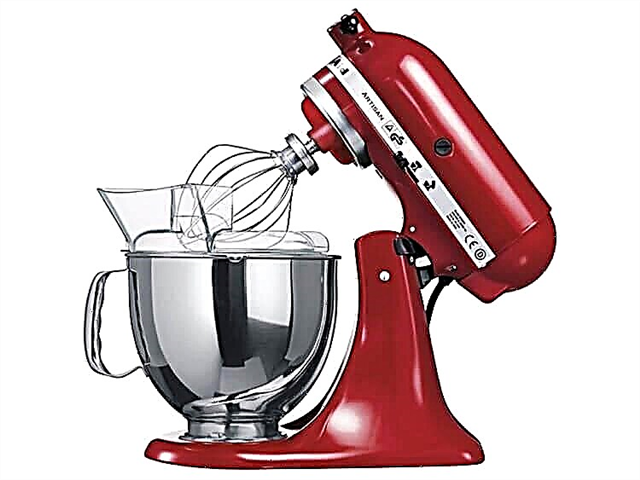
It can be noted that the power of a hand mixer is usually 400 watts, while a stationary mixer can reach up to 700 watts. Accordingly, the speed of the handheld device is almost 2 times less. This can be both a disadvantage and an advantage, since at low speeds the mixture of products is better saturated with air.
The popularity of the mixer is due to the following advantages:
- allows you to get an airy and lush mixture,
- suitable not only for whipping liquid components, but also for kneading dough of different consistencies,
- during operation it does not overheat, therefore it can be used for a long time,
- provides fast and convenient whipping.
Of course, the device has its drawbacks:
- not suitable for grinding ingredients,
- cannot cope with an excessively thick or solid product,
- the scope is limited to liquid and semi-liquid components,
- makes noise when working.
The disadvantages include the fact that the stationary mixer takes up a lot of space (which is not always convenient in the limited space of kitchens), but the same applies to the stationary blender.
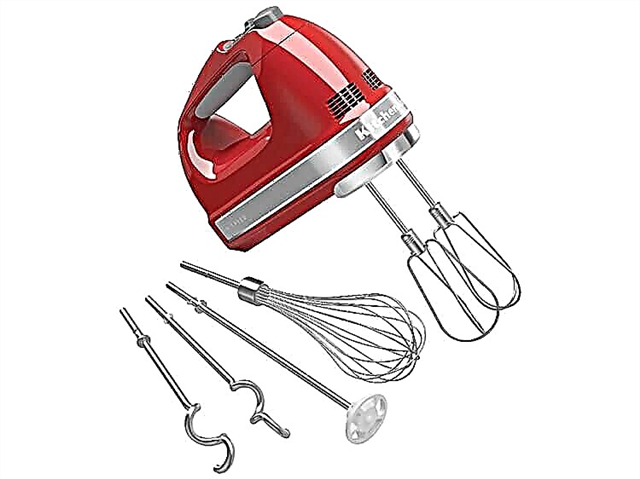
What is the difference?
In the process of cooking, there is often a need to beat, mix or grind various products, and it is worth noting that for many operations you can use both a mixer and a blender.
To understand which device should be used in each case, you can use the special table of the most common operations with products.
| Type of transaction | Blender | Mixer | |
|---|---|---|---|
| Stationary | Manual | ||
| Vegetable / Fruit Shredder | Yes | medium | no |
| Mashed potatoes | Yes | medium | no |
| Crushing nuts / breadcrumbs | medium | Yes | no |
| Ice crack | Yes | medium | no |
| Cocktail making | Yes | medium | medium |
| Whipping Proteins / Yolks / Eggs | no | medium | Yes |
| Making homemade mayonnaise | no | no | Yes |
| Pancake batter | medium | medium | Yes |
| Thick sour cream dough | no | medium | Yes |
| Pastry dough | no | no | Yes |
Which is better to choose?
It is best to have two appliances in the kitchen, designed for various operations. If the circumstances are such that it is necessary to choose one thing for the home, then you should first evaluate the advantages and disadvantages of each device.
First of all, you must decide which dishes are most in demand in your family. For example, if you like to cook pastries or a variety of desserts, then you definitely need a mixer. If you have a small child, or you often cook mashed dishes, then in this case a blender is perfect.
You need to understand that the mixer is used for mixing and whipping liquid components, but it is not intended for grinding. The blender, in turn, is able to chop not only fruits and vegetables, but even nuts or ice.
The mixer cannot function as a blender, while in some cases the blender successfully replaces the mixer, using it you can whip cream, eggs or sauce, prepare homogeneous cocktails or smoothies.
Mixers, as a rule, have less power, so even if there is a nozzle with knives, they will not make such a good mixture as more productive blenders.
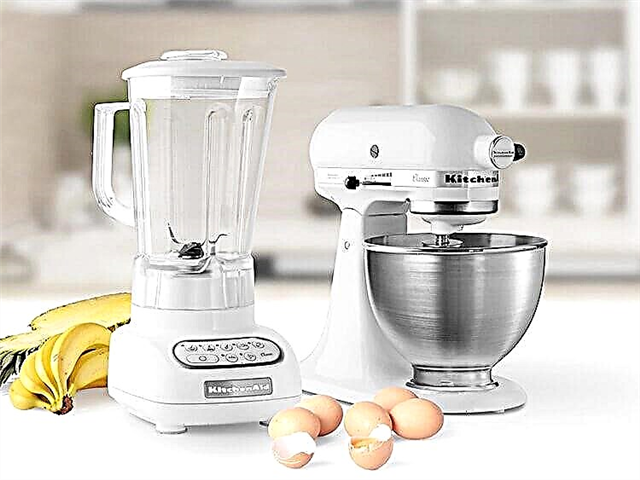
Mixer and Blender - 2 in 1
The cardinal difference in the basic purposes of the mixer and the blender led to the appearance on the market of combined devices, for example, blenders having the function of a mixer.
In addition, you can find sophisticated harvesters that not only grind and whisk products, but are also able to squeeze juice, chop meat, grind coffee and cereals, etc.
The most common are 2 in 1 mixer-blender devices, but sometimes there are even 3 in 1 models. As a rule, they are compact in size, do their job well, and their cost is reasonably acceptable and will not become a hole in the family budget.
Two-in-one devices equally perform the functions of both a mixer and a blender. This is very convenient, because you can immediately chop the vegetables, mix them in the required consistency, make mashed potatoes, add beaten egg white - the variety of operations is limited only by the presence of products in the house.
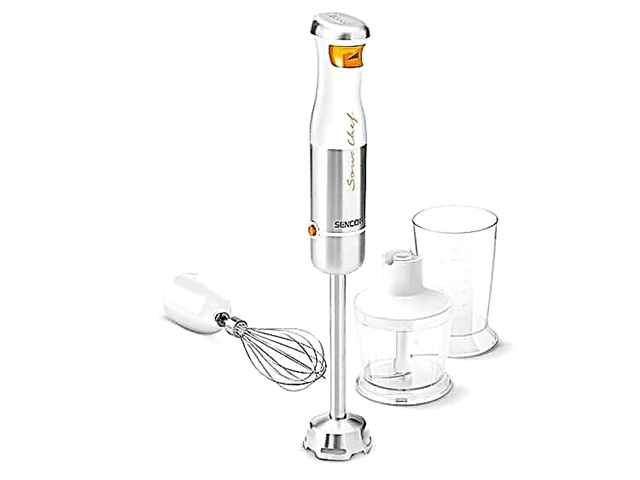
The simplest hand blender mixers consist of the following parts:
- housing with control unit,
- steel blade chopper, which is used as a blender,
- whisk nozzle, necessary for whipping liquids.
At the other end of the lineup are serious devices with high power, significant performance and increased bowl volume (up to 6-7 liters). As a rule, such devices are used in large families, where they often like to cook a wide variety of dishes.
Their disadvantages include the following points:
- high cost (up to 10 thousand rubles),
- loud noise during operation,
- Significant power consumption
- complexity of operation.
In some devices, power is unevenly distributed depending on the functions performed. In addition, the overall device can weigh up to 10 kg and requires a permanent place in the kitchen, which is not always convenient in confined spaces.
The most commonly used budget small models that quickly gained popularity in the market for kitchen products. They are convenient to use, have sufficient power, high quality and inexpensive.
The capabilities of such a two-in-one appliance are quite enough to satisfy the needs of an average family if you need to beat eggs or cook mashed potatoes from time to time.
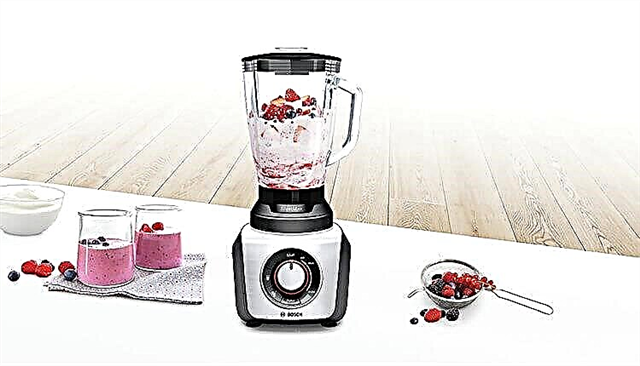
Stationary blender
The stationary device has the shape of a tall bowl, at the bottom of which knives are installed. Usually the bowl is equipped with a handle and a nose, so it is ideal for preparing a variety of cocktails. Both liquid and solid products, as well as ice, can be added to the tank if the power of the device is high enough. After pressing the button, the contents of the bowl begin to whip, and the solid ingredients of the cocktail are crushed. The result is a homogeneous drink with a little foam.
Hand blender
At the submersible blender, the knives are located at the end of the plastic “leg”. A control button (on and off) is installed at the top of the motor housing. Modern models are ergonomic, and it is usually convenient to use the device even for housewives with small and narrow palms.
Submersible blenders can include a measuring cup with high sides. The device is most conveniently used for preparing small-volume dishes: small portions of mashed potatoes, cream soup, sauce, etc.
Do not confuse the blender with the chopper. The latter always has a large bowl and knives, which are ideal for chopping, but are not able to whip products.
What is the difference between devices, and what to choose
To summarize: what is the difference between a blender and a mixer. Blender It is capable of grinding solid products, as well as whipping and mixing solid and liquid components. Mixer it is not intended for grinding, it does not work with dense ingredients, but it mixes and whips liquids very well, saturating them with air.
A stationary blender is able to perform all the functions of a mixer, and with it you can also cook minced meat, chop nuts and ice, whip cream or sauce. Blenders with a bowl are indispensable in the preparation of cocktails and smoothies, which include a variety of ingredients. Drinks are perfectly whipped and uniform. The immersion device has fewer functions, but it is more mobile and easier to wash.
Submersible blenders often have several interchangeable nozzles, among which there may be a whisk, and even a bowl with a grinder. With sufficient power, such a multifunctional device is able to cope with any task in the kitchen. A food processor often combines both a mixer and a stationary blender.
To better understand the difference between a blender and a mixer, and compare the functions of two devices, we suggest that you familiarize yourself with a small table.
| Function | Stationary blender | Hand blender | Any mixer |
| Dough for pancakes and pancakes | Good | poorly | Fine |
| Cocktail | Fine | Fine | Good |
| Ice crushing | Good | Good | poorly |
| Cream soup, mashed potatoes | Good | Fine | poorly |
As you can see, a blender can easily cope with most tasks, especially if it has a whisk. The mixer is most often preferred by advanced confectioners who place high demands on the quality of whipping.
Video on the topic of the article
A video on the topic of the article will also help to better understand the difference between a blender and a mixer.
In the past - a successful lawyer who has radically changed her lifestyle. In the new role of the wife and mother, the ability to single out the main thing and “put everything on the shelves” remained unchanged. I am always ready to share my discoveries and experience.
Found a mistake? Select the text with the mouse and press:
If the first signs of bearing in the form of untidy spools appeared on your favorite things, you can get rid of them with the help of a special machine - a shaver. It quickly and efficiently shaves the fibers of a fabric that are bundled into lumps and restores things to a dignified appearance.
Threads of gold and silver, which in ancient times embroidered clothes, are called cantle. To obtain them, the metal wire was long pulled by ticks to the state of the required subtlety. Hence the expression “pull (raise) the gimlet” - “to engage in a long monotonous work” or “to delay the completion of the work”.
Stretch ceilings made of PVC film are able to withstand from 70 to 120 liters of water per 1 m 2 of their area (depending on the size of the ceiling, its degree of tension and the quality of the film). So you can not be afraid of leaks from neighbors from above.
There are special traps for fighting moths. Pheromones of females attracting males are added to the sticky layer with which they are coated. Adhering to the trap, they drop out of the breeding process, which leads to a decrease in the moth population.
It is easiest to remove scale and carbon from the sole of the iron with common salt. Pour a thick layer of salt onto the paper, heat the iron to the maximum, and several times, pressing lightly, slide the iron over the salt litter.
Before removing various stains from clothes, you need to find out how safe the chosen solvent is for the fabric itself. It is applied in a small amount to an inconspicuous part of the thing from the inside for 5-10 minutes. If the material retains its structure and color, you can go to the spots.
Fresh lemon is not only suitable for tea: clean the dirt from the surface of the acrylic bath by rubbing with half a cut citrus, or quickly wash the microwave, putting in it a container of water and lemon slices for 8-10 minutes at maximum power. Softened dirt will simply wipe with a sponge.
The habit of "economically" using a washing machine can lead to the appearance of an unpleasant odor in it. Washings at temperatures below 60 ℃ and short rinses allow fungi and bacteria from dirty clothes to remain on the inner surfaces and actively multiply.
In the dishwasher, not only plates and cups are well washed. Plastic toys, glass shades of fixtures and even dirty vegetables, such as potatoes, can be loaded into it, but only without the use of detergents.
What is a mixer?
A mixer is a device for whipping dough, cream, cocktails. Its main part is two corollas with a twisting mechanism. Coming in motion, beat the whisk cream or bring the dough to a uniform consistency.
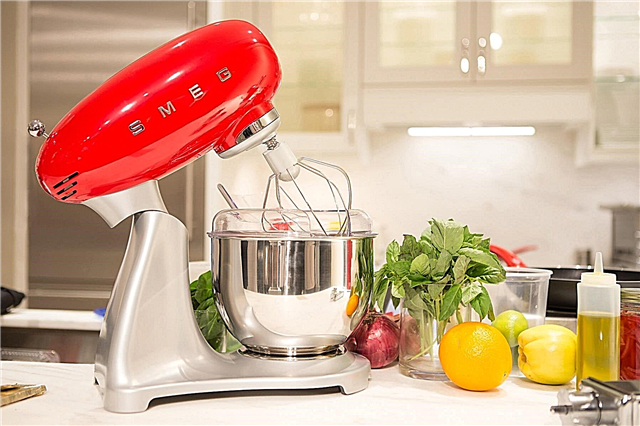
The device may be portable or stationary. Stationary is a mini-station with a stand for fixing the movable part and a deep bowl for ingredients.
Advantages and disadvantages
- easy to make a uniform dough,
- beat well
- can work for a long time without overheating.
- stationary variations take up a lot of space in the kitchen,
- limited options
- cannot work with too thick liquids, solids,
- sprays the mass, if you do not use deep dishes,
- no chopping option.
What is a blender?
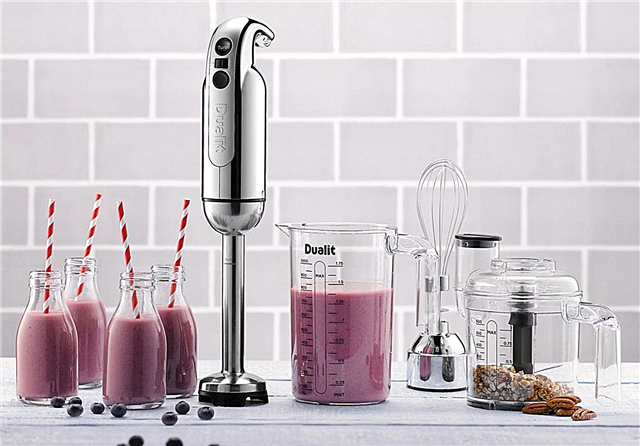
A blender is not as good for whipping as a mixer.Cream or dough is best done with the first device. But with cocktails, smoothies, sauces from raw vegetables, he will cope perfectly.
The name "blender" is translated from English as "mixer", as well as "mixer". However, the principle of operation of the technique is different.
The device does not just mix the ingredients. Its main function is grinding. Several knives located inside the bowl (for stationary) or at the end of the nozzle (for manual), when moving, can finely chop boiled vegetables, fruits, raw solid foods.
As a result, you can get both a mass of a large fraction for granola and a homogeneous liquid for a cocktail.
Even in the basic variations, in addition to knives, corollas are used as nozzles. They serve as a mixer.
Advantages and disadvantages
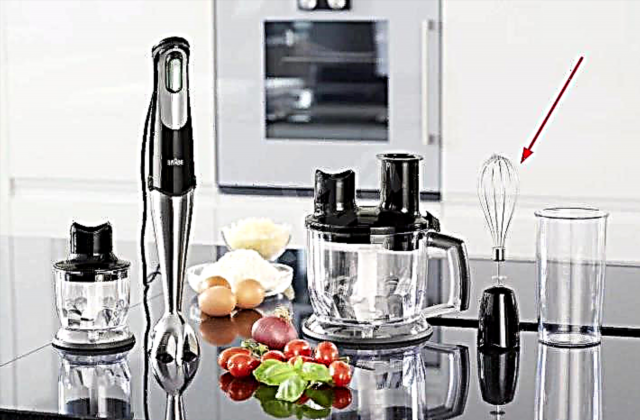
- opportunities - prepares minced meat, cocktails, yogurts, baby mixes, smoothies, sauces,
- grinds solid foods, ice,
- equipped with beater, so it can mix and whisk the dough,
- more compact, even if we take the stationary model for comparison,
- modern versions are equipped with a spray nozzle.
- there is almost no whipping effect, so it’s difficult to get a cream from egg protein,
- doesn’t mix the dough as well as a mixer,
- overheats with prolonged use.
Appearance
The most noticeable difference between the mixer and the blender is in appearance. The first looks like a rounded iron. Two nimbuses are attached to the bottom, and the upper part is equipped with a large handle.
There is a switch on top of the handle: it moves the device from the “Off” position to "On", and also allows you to adjust the speed. The number of speeds depends on the cost of the equipment.
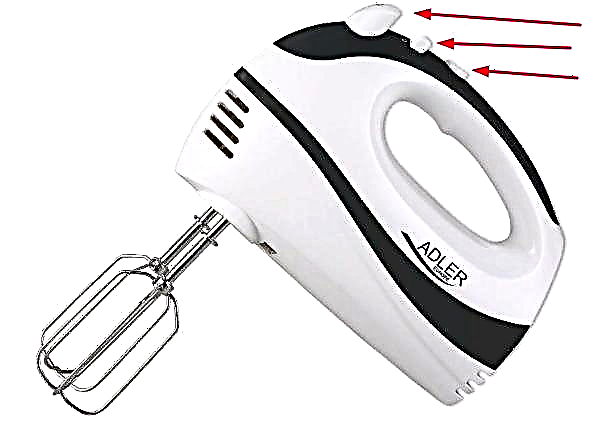
Due to the dimensions, it is not possible to hold the device in the hand for a long time, therefore stationary models are purchased for prolonged kneading of the dough. They are described below.
Hand blender (the most common variety) is more ergonomic. It is a long handle, often with a rubber coating, which ends with a small rounded nozzle.
At the top of the handle are buttons for shifting gears. In more expensive options there is a mode selection button. Complete with a submersible option usually comes a tall, narrow measuring cup, which can be used as a container for grinding.
Blenders have a more modern look. The most common type is metallic with the addition of black. There are models with a housing made of plastic, aluminum, stainless steel.
Varieties
Both devices have stationary and mobile versions. Figurative variations have already been considered. Now it’s worth examining the differences between stationary ones.
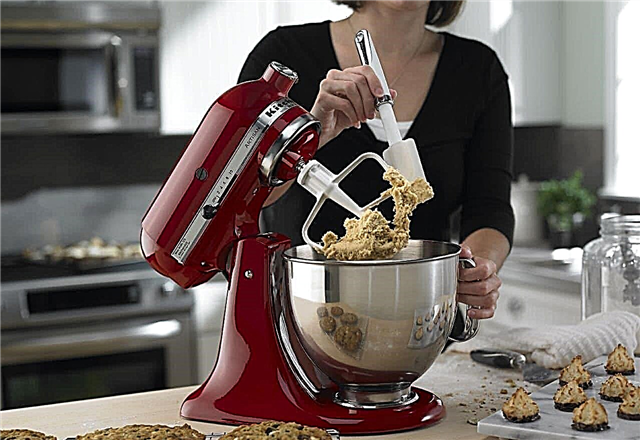
Stationary mixer - a design consisting of a large, deep bowl, stand, as well as the device itself with a twisting mechanism.
It can be removable or non-removable, in the second case it leans back when mixing stops. The device takes up a lot of space, but a deep bowl prevents splashes.
There are measuring marks on the bowl, and the control interface is on the stand. The cutting blades are located at the bottom of the bowl, unlike the submersible structure. This option is used if cocktails are often prepared.
Features of work
Mixers are less noisy at work. This is due to the power of the unit, as well as the fact that when starting, the blades of the knives do not spin. Standard specifications are 200-300 watts.
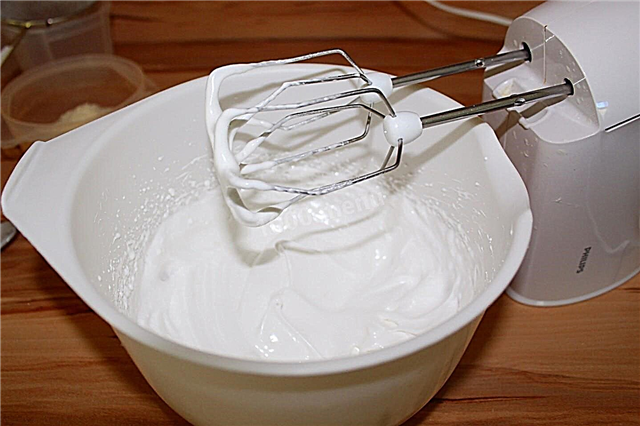
There are manual models for 450-500 watts, but the average user will not need such power. Another feature follows from this: low power consumption.
Mixers heat up more slowly. They can beat the proteins for 2-3 minutes without fear that overheating of the internal wiring will occur. But blenders are prone to malfunctions due to heating. These devices turn on for a short time, for 10-40 seconds, then give the technique a "rest".
Excessively long work without interruptions threatens the power grid. However, in such a short time, the device fully fulfills its purpose - it grinds the products.
The mixer creates splashes during operation, which can only be avoided by using a deep, wide tank. Modern blenders are equipped with an anti-spray system: the nozzle with knives has a wavy shape. When using them, you can not be afraid for the cleanliness of the kitchen.
Functions and Features
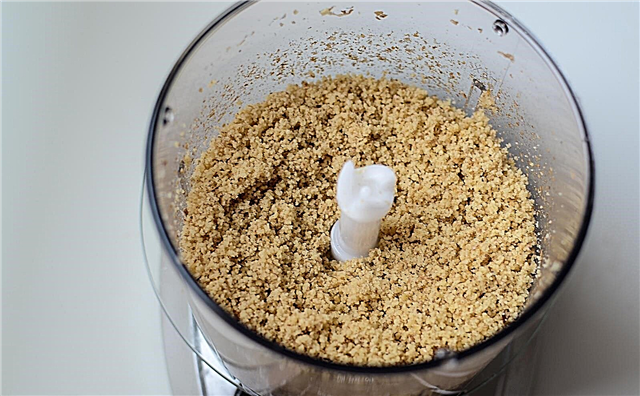
The mixer has two functions: the first is mixing, the second is whipping. It is not intended for grinding products. If you need to create a dough with the addition of oil, first you have to melt it.
The blender performs the following functions:
- Stirring. The blades of the knives evenly distribute the ingredients, creating a homogeneous mixture.
- Whipping. The corollas included in the kit can whip cream or dough almost as well as mixers for 2000-3000 r. But when compared with professional variations, the quality is worse.
- Shredding. Knives can chop fruit until soft mashed, make medium-sized oatmeal, chop nuts. They do well with cooked, raw vegetables.
- Splitting up. If preparing a cocktail with the addition of ice, you can put this mode. The ice is crushed, but not to such an extent that it melts immediately in the drink.
Which is better - blender or mixer

To choose between devices, you need to analyze what is more often prepared. If the owner creates complex dishes from the dough (pies, bread, muffins), a good mixer is worth buying for the house. He mixes the ingredients well and gives the dough a touch of airiness and splendor.
When choosing, it is worth considering the price. Mixers are more affordable: a standard manual model costs 1000 p. A blender for this price will be weak. The cost of functional models is 3000-4000 p.
Recently, buyers have preferred blenders. Few people constantly bake. Much more important is the opportunity at any time to create a uniform sauce, a gentle cocktail or baby food for the child.
Blender and mixer: what is the difference?
The working element of the mixer is whisks, and the main task of the device is to whip and mix the products. For example, with its help, you can whip the whites in a cream or make whipped cream. Also, thanks to the mixer, you can make homemade mayonnaise or not very thick dough.

In the blender, the main element is steel knives that rotate at high speed. Thanks to this, you can grind the products in a smoothie, chop vegetables for salad and even chop ice. For processing small portions (for example, for preparing a portion of baby puree) it will be convenient to use a submersible blender, and for working with large volumes it is better to use the bowl option.
Theoretically, using an immersion blender, you can also beat the egg into foam, knead the dough with pancakes and pancakes, but the quality of the whipping in the mixer will be definitely better. Therefore, if it is important for you that the finished dish was magnificent, you can not do without a mixer.
But in the preparation of mashed soups, chopping nuts and crackers for breading, blenders are indispensable, since no mixer can cope with this task. Also, using a blender, you can make pastes, mashed potatoes, sauces and powdered sugar.
At the same time, there is an alternative option combining the advantages of both appliances for the home. This is a food processor that has both a blender and whisk for whipping. There are also multi-function submersible blenders with several interchangeable nozzles.
The only thing that definitely should not be done is to buy a blender or mixer from an unverified or substandard brand. In this case, you may encounter a situation where the device does not cope with its tasks or quickly becomes malfunctioning.
Which is better: blender or mixer?
Before choosing a new kitchen appliance, think about which dishes you cook most often. A few tips will help you solve this dilemma:
- when there is a small child in the house, a blender is a real must have for making fruit and vegetable purees,
- if you love making homemade cakes, the mixer will definitely come in handy for making creams and dough,
- a blender will also be useful for fans of sports nutrition, as with this device you can make smoothies and other healthy drinks,
- if in your kitchen there is no meat grinder yet, a blender can be a worthy substitute for cooking minced meat,
- lovers of cocktails, vegetable dishes and creamy foods will need a blender (in the case of vegetables, the chopper is an option).
The main differences
Before making a choice, you need to think about why you need it? The mixer can be used to make all kinds of desserts and delicious cocktails. You can also use it to make liquid soup. Basically, all mixer models incorporate nozzles. They will help knead the dough and whip the air cream. Select the desired speed mode and proceed. Many manufacturers do not limit mixers and supplement them with whisks, which help to increase the volume of text. Choose a mixer with a beautiful and stylish design so that you can constantly delight you in the kitchen.
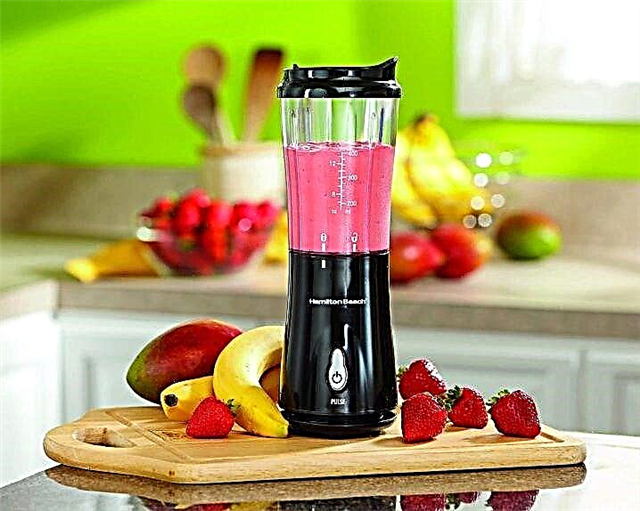
A worthy replacement for hand-held models is desktop mixers. They have recently been very popular. They do not need to constantly be kept on weight, which is more convenient and practical. Also, the power of desktop models is much higher. For breaking lumps there is an enhanced mode. The whisk in such blenders moves around the perimeter of the dishes. Quite often, such models of kitchen units are made of very durable steel.
It is better to choose mixers with a volumetric bowl.
Among the main disadvantages of desktop models is its bulkiness and tangible cost.
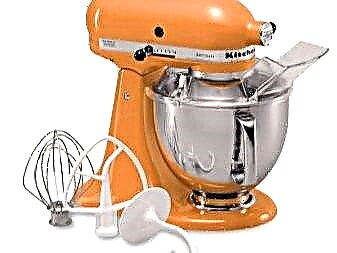
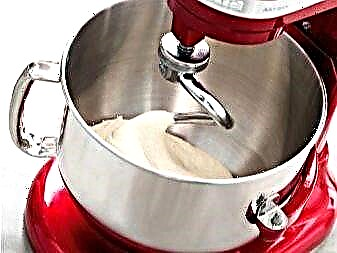
Blenders have slightly different features. They not only thoroughly chop, but also chop products. The cutting method can be selected independently. The blender can be easily compared to a small-capacity food processor. It is worth noting that it takes up much less space and its price is more affordable.
To make a choice, you need to understand in more detail what a mixer and a blender are and how to choose them correctly.
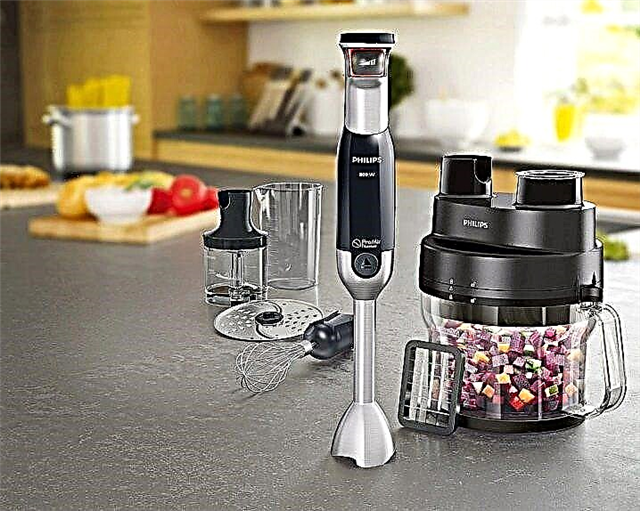
Favorable mixer differences
If you value convenience and are looking for a machine that quickly mixes the ingredients for baking or allows you to make a cream, then mixers are exactly what you need. Every housewife is well aware that the main rule of cooking and baking is careful mixing and balanced proportions of ingredients. Benefits:
- Ideal for making desserts. If elegant cakes, playful cupcakes, delicious desserts are your culinary pride and the arsenal of your favorite pastries is not limited to pancakes and charlotte, you need a mixer.
- Stationary models. If you have to deal with a large volume of ingredients that need to be mixed, choose a stationary model with a more powerful engine.
- Big bowl. Stationary mixers are more powerful and have a bowl with sufficient volume.
- Thorough mixing. Mixers will pleasantly surprise you with the presence of various functions that will allow you to cook dishes faster and without extra effort. The swinging motion of the mixer will ensure thorough mixing of the ingredients.
- Mixers for the test. Indispensable for kneading dough. The unique shape of the mixers and the coordination of movements of the mixer will create ideal conditions for the formation of a dough of any consistency.
- Whisk for whipping. With them, preparing light creams and mousses will be a real pleasure. Lush desserts can now be created with a single whisk movement. The mixer will also help to prepare gentle milkshakes, fragrant soufflé and pastry for an unsurpassed crumbly biscuit.

